Author: Sinikka Koskinen
Sirpa Kähkönen: Vihan ja rakkauden liekit. Kohtalona 1930-luvun Suomi [Flames of love and hatred. Finland in the 1930s as destiny]
20 January 2011 | Mini reviews, Reviews
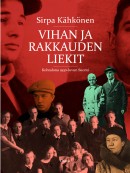 Vihan ja rakkauden liekit. Kohtalona 1930-luvun Suomi
Vihan ja rakkauden liekit. Kohtalona 1930-luvun Suomi
[Flames of love and hatred. Finland in the 1930s as destiny]
Helsinki: Otava, 2010. 287 p.
ISBN 978-951-1-24275-8
€ 32, hardback
In this non-fiction book, novelist Sirpa Kähkönen (born 1964) tells the story of her grandfather Lauri Tuomainen (1904–1971) in the context of Finnish politics of the 1920s and 30s. Tuomainen spent more than seven years in a labour camp at Tammisaari in south-western Finland, where Communist prisoners were sent after the Finnish Civil War of 1918. He was imprisoned in 1926 following his desertion from the Finnish Red Army officers’ academy in St Petersburg, and again in 1932 in the aftermath of planned public protests. The rise in political extremism and the worldwide economic depression made conditions in the prison camp extremely harsh. Kähkönen makes use of many archival sources in her descriptions of the hunger strike in the summer of 1933 and violence inflicted by the prison guards. In 1938 Tuomainen was released a broken man. One of the intriguing figures in this book is Mary Rhodes Moorhouse, from a wealthy British–New Zealand family, an enthusiastic supporter of the women’s rights movement and Communism; she married Eino Pekkala, a member of Finland’s left-wing political elite.
Högtärade Maestro! Högtärade Herr Baron! [Correspondence between Axel Carpelan and Jean Sibelius,1900–1919]
17 December 2010 | Mini reviews, Reviews
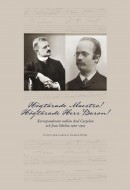 Högtärade Maestro! Högtärade Herr Baron! Korrespondensen mellan Axel Carpelan och Jean Sibelius 1900–1919
Högtärade Maestro! Högtärade Herr Baron! Korrespondensen mellan Axel Carpelan och Jean Sibelius 1900–1919
[My dear Maestro! My dear Herr Baron! Correspondence between Axel Carpelan and Jean Sibelius, 1900–1919]
Red. [Ed. by] Fabian Dahlström
Helsinki: Svenska litteratursällskapet i Finland, 2010. 549 p., ill.
ISBN 978-951-583-200-9
€40, hardback
‘For whom shall I compose now?’ wrote Finnish composer Jean Sibelius in his diary upon hearing of the death of his good friend Axel Carpelan (1858 –1919). Carpelan was a penniless baron, who considered music and his friendship with Sibelius to be the most vital aspects of his life. Using his natural-born talent and instinct, he gained acceptance as Sibelius’ trusted musical confidant, to whom the composer dedicated his second symphony. Axel came to be known by the wider public in 1986, when his great-nephew, the author Bo Carpelan, made him the protagonist of his award-winning novel entitled simply Axel. This volume, edited by Fabian Dahlström, contains the surviving Swedish-language correspondence between Sibelius and Carpelan, as well as letters to Sibelius’ wife, Aino. Carpelan wrote to her when the composer was too busy. These letters contain interesting details such as Aino Sibelius’ account of the origins of her husband’s violin concerto. The comprehensive foreword to this book sheds additional light on Carpelan’s life.
Kai Ekholm & Yrjö Repo: Kirja tienhaarassa vuonna 2020 [The book at the crossroads in 2020]
10 December 2010 | Mini reviews, Reviews
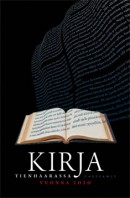 Kirja tienhaarassa vuonna 2020
Kirja tienhaarassa vuonna 2020
[The book at the crossroads in 2020]
Helsinki: Gaudeamus, 2010. 205 p., ill.
ISBN 978-952-495-158-6
€29, paperback
This book looks at Finnish book publishing and its likely rate and direction of change. The future of the Finnish industry looks slightly more favourable than similar international forecasts have made out, although there have been some shake-ups in the Finnish book world too. The authors point out that while the decrease of reading as a leisure pursuit appears to be part of a long-term international trend, many feared for the future of the book in previous centuries as well. Book production and distribution, as well as changes undergone by various genres, are illustrated through a variety of statistics. They also go a long way towards explaining whether the publishing industry’s current difficulties are intrinsic or extrinsic in origin. The authors strive to find new perspectives to get away from a fear of the online world. The renewable publishing and reading culture envisioned by the authors will benefit from the novelty and efficiency of electronic publishing and will reinforce traditional knowledge. Professor Kai Ekholm is the Director of the National Library of Finland; Yrjö Repo is a researcher and statistician.
Georg August Wallin: Skrifter. Band 1 [Writings. Volume 1]
2 December 2010 | Mini reviews, Reviews
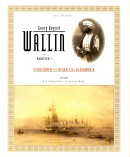 Skrifter. Band 1: Studieåren och resan till Alexandria
Skrifter. Band 1: Studieåren och resan till Alexandria
[Writings. Vol. 1: Studies and the journey to Alexandria]
Utg. [Edited by] av Kaj Öhrnberg & Patricia Berg & Kira Pihlflyckt
Helsinki: Svenska litteratursällskapet i Finland, 2010. 455 p., ill.
ISBN 978-951-583-189-7
ISBN 978-91-7353-371-3 (Bokförlaget Atlantis, Stockholm, 2010)
€ 43, hardback
This is the first volume of a planned six-volume critical edition of the writings of Finnish Arabic scholar Georg August Wallin (1811–1852). The main material for the first volume consists of full text of Wallin’s travel diaries and letters from the years 1831–1843. The Arabic texts are accompanied by parallel Swedish translations. The preface contains an overview of the phases of Wallin’s life and the schools of Orientalism and Rousseau which influenced his work. Wallin’s seven-year research journey to the Middle East, and particularly his crossing of the northern Arabian peninsula as the first Western researcher to do so, brought Wallin great international acclaim. Wallin was the first researcher to record the poetry and study the dialects of the desert Bedouin. He is particularly well known for his visits to the holy cities of Mecca and Medina, forbidden to non-Muslims, and to the women’s quarters in their harems.
Petri Keto-Tokoi & Timo Kuuluvainen: Suomalainen aarniometsä [The Finnish virgin forest]
12 November 2010 | Mini reviews, Reviews
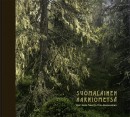 Suomalainen aarniometsä
Suomalainen aarniometsä
[The Finnish virgin forest]
Helsinki: Maahenki, 2010. 302 p., ill.
ISBN 978-952-5870-06-0
€ 48, hardback
This book explains the cultural significance of forests – particularly virgin forests – to Finns. That term is used to refer to old-growth forests in their natural state, characterised by trees of different ages, an abundance of decaying tree remains, and continuous incremental changes. Nowadays around four per cent of Finnish forests are in a natural or near-natural state, and light is being shed on their ecosystems and the history of the slowly vanishing virgin forests. They are associated with deep-seated values and a multiplicity of roles throughout history. To many artists forests have been a significant elemental force, worthy even of worship; peasants and the timber industry have exploited the virgin forests. The authors also consider whether answers to key environmental issues will be found in old-growth forests: safeguarding natural diversity and slowing climate change. In addition to illustrative material from the authors, the book contains photographs by award-winning photographers Ritva Kovalainen and Sanni Seppo.
Toivo Flink: Kotiin karkotettavaksi: Inkeriläisen siirtoväen palautukset Suomesta Neuvostoliittoon [Exiled home: The return of Ingrian emigrants from Finland to the Soviet Union]
15 October 2010 | Mini reviews, Reviews
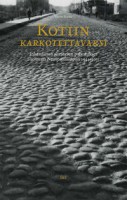 Kotiin karkotettavaksi: Inkeriläisen siirtoväen palautukset Suomesta Neuvostoliittoon 1944–1955
Kotiin karkotettavaksi: Inkeriläisen siirtoväen palautukset Suomesta Neuvostoliittoon 1944–1955
[Exiled home: The return of Ingrian emigrants from Finland to the Soviet Union, 1944–1955]
Helsinki: Finnish Literature Society, 2010. 320 p., ill.
ISBN 978-952-222-183-4
33 €, paperback
It has been 65 years since the Allied Commission operation to repatriate Finnic Ingrian emigrants from Finland to the Soviet Union was completed. During the Continuation War (1941–1944), 63,000 Ingrian civilians fled to Finland to avoid the war; 56,000 of them were returned to the Soviet Union at the order of the Russian-dominated Allied Commission. It is estimated that half of those remaining in Finland secretly fled to Sweden. Ingrians continued to be returned from Finland to the Soviet Union for ten more years. The Ingrians had been promised they would be returned to their former home areas around St Petersburg, but they were actually transferred to more remote parts of the Soviet Union. In this first study to deal exclusively with the travails of the Ingrians, Flink has used Russian archives to uncover how and where the population was moved. This subject has long been a sensitive issue both in domestic and foreign affairs. According to Flink, his research would not have been possible if the return of Ingrians to Finland had not begun in 1990. (There have been about 30,000 immigrants since, and now the state is planning to terminate the right of return.)
Kaipaus Karjalaan. Matkoja kotiseudulle [Longing for Karelia. Journeys to the homeland]
8 October 2010 | Mini reviews, Reviews
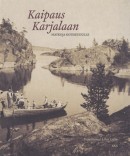 Kaipaus Karjalaan. Matkoja kotiseudulle
Kaipaus Karjalaan. Matkoja kotiseudulle
[Longing for Karelia. Journeys to the homeland]
Toim. [Ed. by] Liisa Lehto
Helsinki: Finnish Literature Society, 2010. 231 p., ill.
ISBN 978-952-222-167-4
€34, hardback
The interest among Finns in making journeys to the areas of Karelia that were lost to the Soviet Union after the wars of 1939–1944 has showed no signs of lessening. On the contrary: the increasing preoccupation of researchers and ordinary citizens with the roots of the Karelians and with their modern way of life makes it possible to speak of a kind of Karelian renaissance. The opening of the borders after the fall of the Soviet Union triggered an enormous enthusiasm for tourism. This book contains fifty accounts of such journeys, drawn from the material of the Finnish Literature Society’s Folklore Archives collected in 1992 and 2007. The personal travel stories are by writers of different ages – the oldest was born in 1906, the youngest in the 1980s – and they focus on attitudes to loss of homeland that range from deep feelings of anger and failure to emotions of joy and of ‘reconciliation with oneself and with the whole of one’s life.’ Acts of purification in the water of the home village well or of swimming in Lake Ladoga are described in terms of a sacred ritual.
Maarit Knuuttila: Kauha ja kynä. Keittokirjojen kulttuurihistoriaa [The ladle and the pen. The cultural history of the cookbook]
24 September 2010 | Mini reviews, Reviews
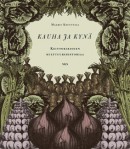 Kauha ja kynä. Keittokirjojen kulttuurihistoriaa
Kauha ja kynä. Keittokirjojen kulttuurihistoriaa
[The ladle and the pen. The cultural history of the cookbook]
Helsinki: SKS (The Finnish Literature Society), 2010. 207 p., ill.
ISBN 978-952-222-187-2
€ 26, hardback
This book by ethnologist Maarit Knuuttila describes the history of European cookbooks, recipes and cooking. Knuuttila familiarises the reader with the earliest documents relating to the preparation of food, which were written by the ancient Greeks and Romans, but of which only a few have been preserved. Instead of haute cuisine the book concentrates on the authors and users of basic Finnish cookery books, and examines how those books reflect the times in which they were written, as well as their significance for women. While the literary high culture of gastronomy has been produced mainly by men, the everyday dishes represented in the basic cookbooks are the work of women. The author discusses the changes in perceptions of the ideal home and health, as well as the ways in which Finnish cookery, housekeeping and food culture have altered during the past hundred years.
Heikki Hiilamo: Kuoleman listat. Suomalaisten salainen apu Chilen vainotuille [Death lists. Secret assistance of the Finns to Chilean dissidents]
17 September 2010 | Mini reviews, Reviews
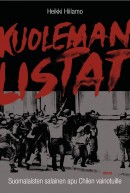 Kuoleman listat. Suomalaisten salainen apu Chilen vainotuille
Kuoleman listat. Suomalaisten salainen apu Chilen vainotuille
[Death lists. Secret assistance by Finns to Chilean dissidents]
Helsinki: Otava, 2010. 362 p., ill.
ISBN 978-951-1-24003-7
€ 32, hardback
The 1973 Chilean coup that ousted President Salvador Allende, and the subsequent persecution of dissidents, forced Allende’s supporters to seek asylum in foreign embassies. A number of refugees climbed over the wall of the Santiago home of Finland’s chargé d’affaires, Tapani Brotherus. As the Finnish official line of neutrality was to avoid interfering in the internal affairs of other countries, Brotherus was taking a great personal risk, by allowing this, and keeping it secret from the Finnish Ministry of Foreign Affairs. With the help of the embassy’s undersecretary and the East German diplomat Arnold Voigt, he and his wife succeeded in helping some 2, 200 people to leave Chile. Brotherus also helped 182 political refugees to obtain asylum in Finland. Heikki Hiilamo, who is now Research Professor at Kela, the Social Insurance Institution of Finland, describes the background of the Chilean dictatorship and the development of the broad-based solidarity movement, which has been characterised as one of the central formative experiences of the generation that grew up in 1970s Finland. The movement’s activists included future Finnish presidents Mauno Koivisto and Tarja Halonen, as well as the future Nokia CEO Jorma Ollila.
Linnoista lähiöihin. Rakennetut kulttuuriympäristöt Suomessa [From castles to suburbs. Built cultural environments in Finland]
26 August 2010 | Mini reviews, Reviews
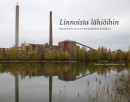 Linnoista lähiöihin. Rakennetut kulttuuriympäristöt Suomessa
Linnoista lähiöihin. Rakennetut kulttuuriympäristöt Suomessa
[From castles to suburbs. Built cultural environments in Finland]
Toim. [Ed. by] Pinja Metsäranta
Helsinki: Finnish Literature Society, 2010. 239 p., ill.
ISBN 978-952-616-206-8
€ 42, hardback
The 2009 inventory of the Finnish National Board of Antiquities includes about 1,300 nationally important built cultural environments, about a tenth of which are represented in this volume. The book introduces the reader to churches, mansions and military barracks, as well as to idyllic countryside and areas formed by industrial agglomerations. Reflected in the inventory is the diversity of the built landscape: the timber prefab districts and concrete housing estates, the reindeer fences of Lapland and the lighthouses of the archipelagos. On display are architectural masterpieces as well as everyday environments: hospitals, schools and prisons. Rural depopulation and urban sameness have changed the landscape in recent decades, but the book shows that much of value still remains. The book contains a list of all the inventory items, also available on the Board’s website (in Finnish and Swedish).
Lasse Rantanen & Hannu Tarmio: Lapin sydän [Heart of Lapland]
20 August 2010 | Mini reviews, Reviews
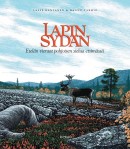 Lapin sydän. Etelän vieraat pohjoisen sielua etsimässä
Lapin sydän. Etelän vieraat pohjoisen sielua etsimässä
[Heart of Lapland. Visitors from the south in search of the Northern soul]
Helsinki: Nemo Publishing Company, 2009. 216 p., ill.
ISBN 978-952-240-015-4
€ 33, hardback
Lapland and its myths have always inspired artists and tourists. In this book two Lapland enthusiasts ponder the things that make Finns from the south return to the north over and over again. Former publisher Hannu Tarmio lost his heart to Lapland 60 years ago; Lasse Rantanen is a graphic designer who is building his own cabin in Savukoski, eastern Lapland. The book is illustrated with his ink-and-abrasive drawings. Tarmio discusses Sámi identity, the history of log floating and gold panning, river pearl mussel fishing, alcohol use, mythology, and tourism and its impact on the environment. The book contains excerpts from literature on Lapland and portraits of its authors (including Yrjö Kokko, Timo Mukka and Nils-Aslak Valkeapää) and presents indigenous Lapps – one of them was Aleksi Hihnavaara, nicknamed Mosku, a legendary but controversial reindeer herder and hunter who fought the Russian Skolt reindeer poachers.
Anu-Hanna Anttila & al.: Kuriton kansa [Unruly nation]
13 August 2010 | Mini reviews, Reviews
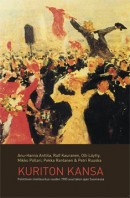 Anu-Hanna Anttila & Ralf Kauranen & Olli Löytty & Pollari Mikko Rantanen Pekka & Petri Ruuska
Anu-Hanna Anttila & Ralf Kauranen & Olli Löytty & Pollari Mikko Rantanen Pekka & Petri Ruuska
Kuriton kansa. Poliittinen mielikuvitus vuoden 1905 suurlakon ajan Suomessa
[Unruly nation. The political imagination of the 1905 general strike in Finland]
Tampere: Vastapaino, 2009. 317 p., ill.
ISBN 978-951-768-246-6
€ 33, paperback
In the beginning of the 20th century the Grand Duchy of Finland, a part of the Russian Empire, entered a period of crisis and began to turn into a nation with its own institutions. Universal and equal suffrage increased tenfold the number of those eligible to vote. A move to the granting of political rights was demanded during the 1905 general strike, which was both an internal political power struggle and a demonstration by Finns against the Russification measures being imposed by their rulers. The book examines the ideological currents of the strike period and investigates their definitions of ‘nation’ and ‘nationality’, with reference to literary research, historical sociology, cultural studies and women’s studies, making extensive use of contemporary documents. The book’s essays portray the spectrum of ideas, reflected in groups like the theosophists, Tolstoyans and anarchists.
Valta Suomessa [Power in Finland]
5 August 2010 | Mini reviews, Reviews
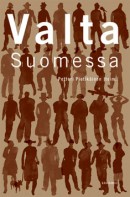 Valta Suomessa
Valta Suomessa
[Power in Finland]
Toim. [Ed. by] Petteri Pietikäinen
Helsinki: Gaudeamus, 2010. 287 p., ill.
ISBN 978-952-495-143-2
33 €, paperback
The authors have been involved in the Academy of Finland’s ‘Power and society in Finland’ research programme, which supports the multidisciplinary study of the historical impact that changes in Finnish society have on its power structures and on those who exert power in Finland. Among the changes are Finland’s accession to the European Union and the internationalisation of corporate and business life. Major power management and policy decisions have often been made without extensive public debate. The articles include studies of the historical changes in economic history and women’s status; other subjects include the conflicts between the forestry industry and nature conservationists; energy policy and the relatively low level of opposition to nuclear power among Finns, labour relations and the opportunities that citizens have to influence media content.
Matti Rämö: Polkupyörällä Intiassa. Lehmiä, jumalia ja maantiepölyä [Cycling in India. Cows, gods, and road dust]
30 July 2010 | Mini reviews, Reviews
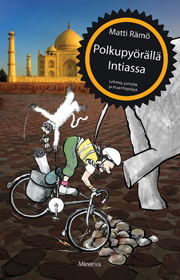 Polkupyörällä Intiassa. Lehmiä, jumalia ja maantiepölyä
Polkupyörällä Intiassa. Lehmiä, jumalia ja maantiepölyä
[Cycling in India. Cows, gods, and road dust]
Helsinki: Minerva Kustannus Oy, 2010. 301 p., ill.
ISBN 978-952-492-335-4
€ 27.90, hardback
The author decides to take a pinch of the ashes of his dead mother to India’s Varanasi, the city of pilgrims on the banks of the Ganges, and at the same time visit his daughter at an international high school on the country’s west coast. Rämö takes his bicycle on the plane to Delhi and in the course of a month cycles more than 2,600 kilometres, from Delhi to Mumbai. The cyclist is challenged by the heat and humidity, the chaotic traffic, the awkward sections of road and the endless thirst for knowledge on the part of curious bystanders – but his observations are deeper than those of the average travel author, as he worked in India in third world research during the 1980s and 1990s. In the summer of 2007 he completed a four months’ cycle tour of the Sahara, travelling some 9,600 kilometres, and published a book about his experiences (Rengasrikkoja Saharassa, ‘Punctures in the Sahara’, Minerva, 2008). In spite of the shorter length of the Indian journey, the author thinks it possessed a higher difficulty factor.
Lassi Saressalo: Pois Suomesta [Out of Finland]
12 July 2010 | Mini reviews, Reviews
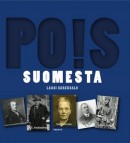 Pois Suomesta – Suomesta paenneita, karkotettuja, väkisin vietyjä, laittomasti lähteneitä
Pois Suomesta – Suomesta paenneita, karkotettuja, väkisin vietyjä, laittomasti lähteneitä
[Out of Finland – refugees, deportees, abductees, illegal emigrants]
Tampere, Traff Kustannus, 2010. 297 p.
ISBN 978-952-99079-7-7
€ 29, hardback
Dr Lassi Saressalo, head of the Finnish Local Heritage Federation, has gathered a large collection of stories about people who were deported or abducted from Finland, or who fled as refugees. The examples relate to several periods of Finland’s history, including Swedish and Russian rule and the period since independence in 1918. People have had to leave Finland at different times for different reasons: some fled the cruelty of conquerors or conscription, others were forced to leave because of their political views or patriotic aims, either on their own initiative or by the government. The most recent cases discussed in the book date from the period following the end of the Second World War. The book is accompanied by a (Finnish-language) website, which provides additional background information on the events that are described as well as a forum for discussion.
